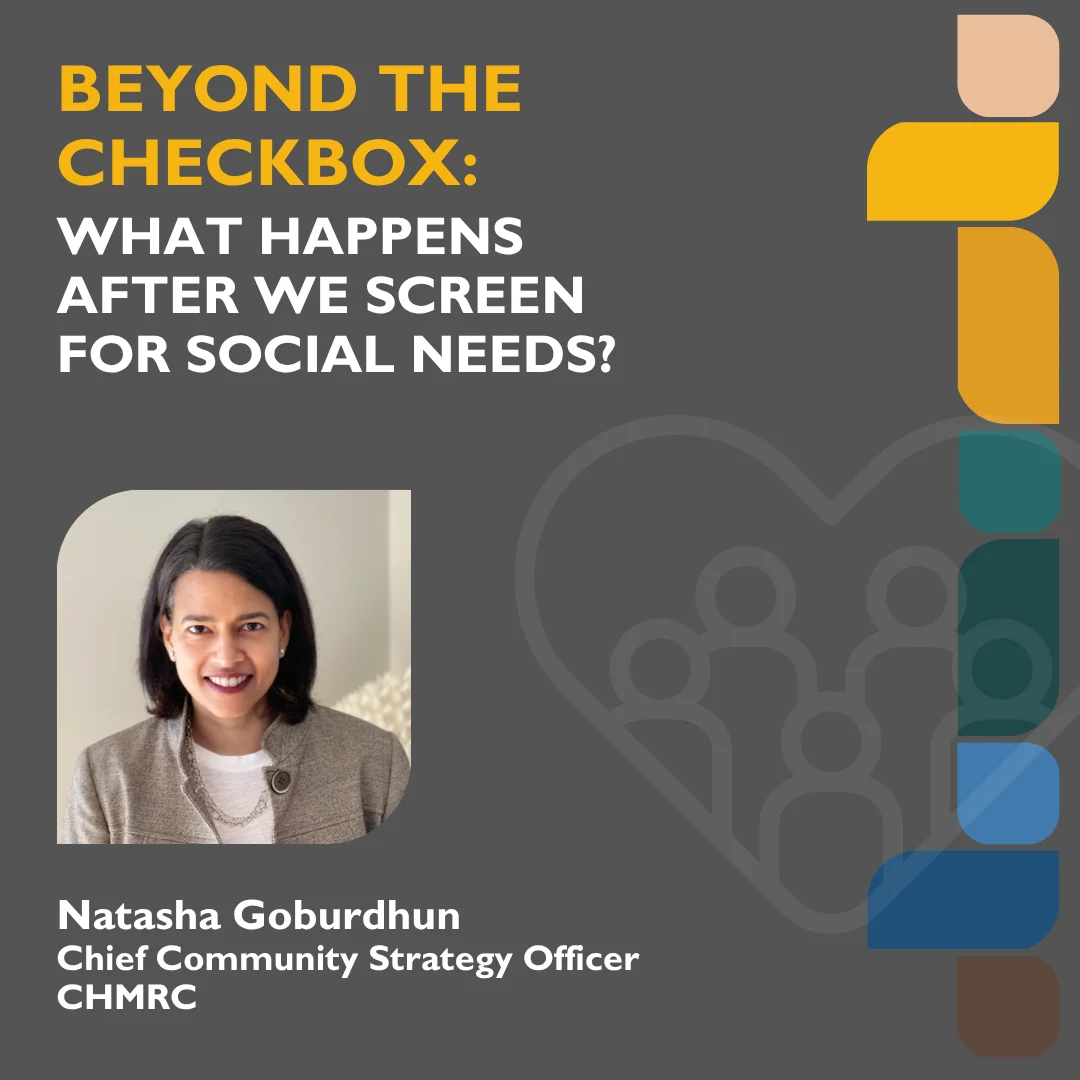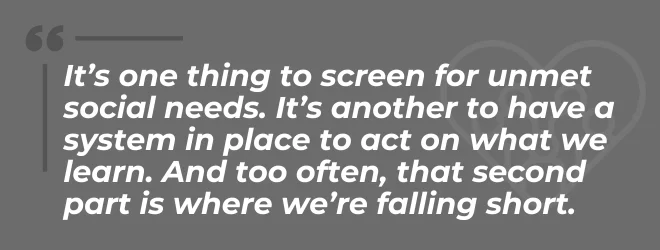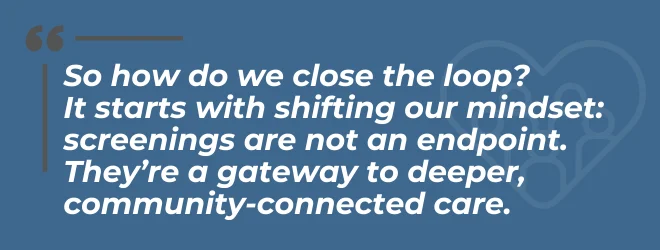
By Natasha Goburdhun, Chief Community Strategy Officer, CHMRC
We’ve made progress. A decade ago, asking patients about food access, housing stability, or transportation wasn’t common practice in healthcare. Today, discussing and screening for social determinants of health is more commonplace both in healthcare and in social care settings.
While federal funding for SDoH services remains unclear, identifying social needs is a critical first step in improving individuals’ access to appropriate healthcare.
The question we’re now facing – one that Danielle Carter explores in her recent piece for MedCity News – is: What happens after the questions are asked?
It’s one thing to screen for unmet social needs. It’s another to have a system in place to act on what we learn. And too often, that second part is where we’re falling short.

Carter’s article points out a growing concern: when patients disclose sensitive challenges like eviction risk or food insecurity, and nothing happens afterward, it can erode trust. It can also lead to staff burnout…clinicians who feel helpless, asking questions they know they can’t answer.
Part of the issue is infrastructure. As Carter notes, the tools used to screen for social needs often don’t integrate well into electronic health records. Follow-up pathways aren’t clearly defined. Community partners might be available, but the connection between screening and service isn’t automated, tracked, or even resourced.
This policy conversation is evolving.
Centers for Medicare & Medicaid Services (CMS) recently released a proposed rule signaling a shift in how social determinants of health (SDoH) will be measured and prioritized at the federal level. Key changes include proposals to remove the SDoH screening and health equity structural measures from the Inpatient Quality Reporting (IQR) program, citing reporting burden and limited aggregate outcome improvements. CMS also suggests scaling back data collection in long-term care settings and is introducing the term “wellbeing” to frame a broader, outcome-focused approach to health.
While these updates are still in the comment period, they offer insight into how the federal landscape may shift, away from blanket data collection and toward more actionable, measurable outcomes. For those of us building public health reporting (PHR) tools and community engagement strategies, this highlights the need to demonstrate real impact, both on health outcomes and system cost, if we want these efforts to be sustained.
At CHMRC, we see this gap up close. Community organizations often become the de facto front line for issues surfaced in clinical settings. But without warm handoffs, data-sharing agreements, or funding, they’re forced to do more with less, again.
So how do we close the loop?
It starts with shifting our mindset: screenings are not an endpoint. They’re a gateway to deeper, community-connected care. That means:
- Building stronger partnerships with CBOs who already know the communities and can meet social needs
- Investing in interoperability so data flows meaningfully, not just compliantly
- Resourcing the follow-through, not just the screening itself
- Training staff on what to do after someone says, “Yes, I need help.”

None of this is easy. But if we’re serious about improving access we have to stop treating SDoH screening as a box to check- and start treating it as a promise. If we ask the question, we must be prepared to walk with people through the answer.
🔗 Read the full article by Danielle Carter: Beyond Screening: Addressing Social Challenges After the Questions Are Asked
Let’s work together to strengthen what matters most: your community. Reach out to us here anytime. We’d love to meet you.
Stay in touch:
- 📬 Sign up for our newsletter
- 💬 Learn more about the CHMRC Community Network
- 💬 Join the CHMRC Community Network

 CHMRC Community Network
CHMRC Community Network